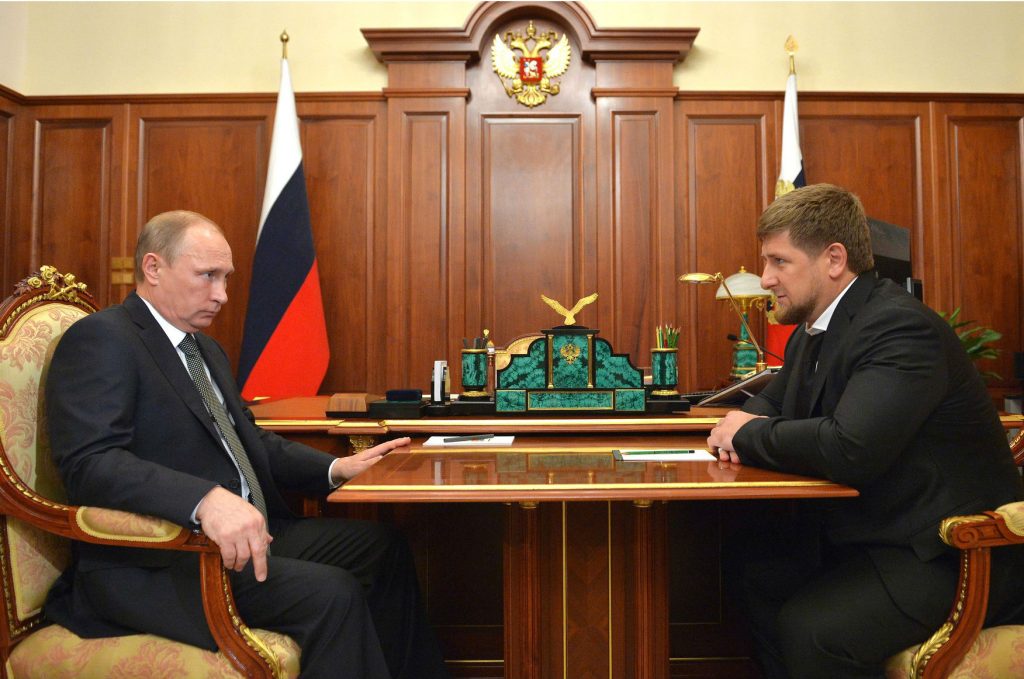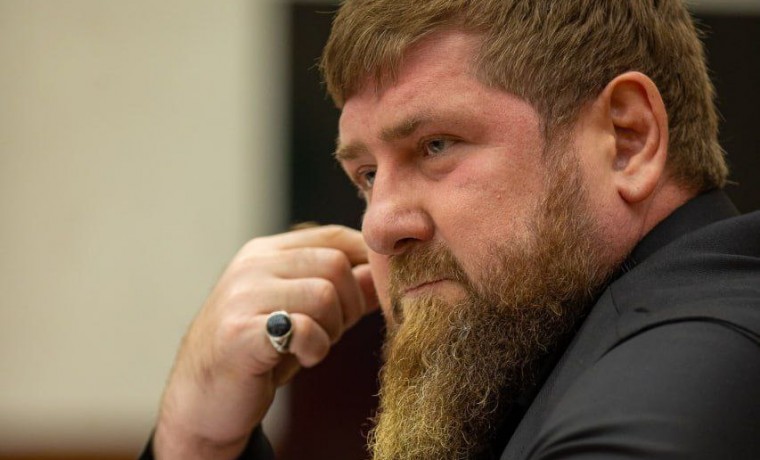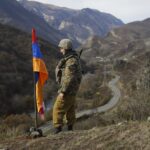Uncertainty surrounding the health condition of Chechnya leader Ramzan Kadyrov sparks turbulence in Russia’s domestic politics and creates additional risks for stability across the Caucasus.
Rumors about Kadyrov’s grave illness have been circulating in Russia for about 1.5 months. In recent days, a number of reports emerged claiming he is either in a coma or dead. Kadyrov’s last known location is Moscow’s Central Clinical Hospital. Recently, numerous vehicles cars with Chechen regional license plates were spotted in the area, as well as figures representing Chechen elites. Most versions suggest that Kadyrov was hospitalized with kidney failure and underwent a kidney transplant operation. Allegedly, his body started to reject the transplanted organ.
Renal failure could be provoked by cocaine abuse. The fact that Kadyrov seems energetic and lively iscaused by drugs.

More on this story: Ramzan Kadyrov political and psychological profile
Ramzan Kadyrov has gained a lot of weight. He also has a swollen face. Akhmied Zakayev, former deputy prime minister of Chechnya, The politician in exile also claims that Kadyrov may have kidney problems. According to the Bild newspaper, Dr. Yassin El-Shahat, head of the nephrology department at the Abu Dhabi hospital was to come to Grozny.
Despite the fact that it remains impossible to confirm or deny Kadyrov’s critical health condition, there are numerous indicators of health problems. Thus, the current situation allows for outlining the possible impact of a dramatic development on the situation in Russia and Chechnia.
Another indirect evidence of Kadyrov’s critical health issues is that his son Adam had an audience with President Vladimir Putin in March 2023. Since Putin’s own health condition suggests that he refrain from any insignificant meetings, the reception of 18-year-old Adam Kadyrov may point to the president’s move to assess the successor to the top post in Chechnya. After Ramzan Kadyrov’s father died, he was also received by the president in the same way before he was appointment.

More on this story: How dynamically the influence of Putin’s close circle changes
We remain skeptical about the scenario of major destabilization in Chechnya in case of Kadyrov’s death. Chechnya is a model typical for medieval Caucasian tribes united by a leader around control of budget schemes and distribution of resources. It is similar to African tribalism, where tribal groups get access to budget funds and natural resources as a result of their representative coming to power. Some 30% of Chechen officials are part of Kadyrov’s family, 23% come from his native village, and another 12% are friends and distant relatives.
The Benoy Teyp (clan), to which Kadyrov belongs, will make every effort to preserve power and stability in Chechnya. However, this may be hindered by the efforts of other groups embroiled in a lasting blood feud with Ramzan Kadyrov’s entourage. This is the opposition, whose members were assassinated, publicly humiliated, or persecuted by the authorities, so it retains vendetta motives in line to Caucasus customs. In case of their situational unification, tensions in the region may rise. However, the presence of armed Akhmat units that are part of the Russian Guard certainly increases the political stability of Kadyrov’s gang members. Although the Akhmat units showed mediocre performance in Ukraine battles, their efficiency on their home soil as policing units crushing on political opponents is quite high.
Another problem of Kadyrov’s teyps is the lack of real competitors. This increases the likelihood, in the absence of Ramzan Kadyrov as an acclaimed arbitrator, representatives of nine families within the Benoy Yeyp, as well as the related Biltoi Teyp, will face conflicts over the spheres of influence. There are doubts that Kadyrov’s sons will be able to serve as such arbitrators.
The eldest son, Adam, is 18 just years old and, obviously, is yet to gain reputational weight even within his closest circle. While President Putin personally backed the authority of Ramzan Kadyrov, Adam is unlikely to enjoy similar support, and the president’s closest entourage will try to limit his powers and capabilities as much as possible. Meanwhile, speaking of his potential successor, Ramzan Kadyrov earlier named Adam Delimkhanov, a member of the Russian Parliament, who promotes Kadyrov’s vested interests in Moscow.
First of all, Kadyrov’s death will affect his personal guard and the Terek SWAT team, which will be handed over to the Russian Guard or the FSB. Such a scenario is highly likely since Kadyrov’s current entourage will try to quickly take control of these paramilitary units in order to use them as a power tool in negotiations with the Kremlin on preserving the existing model of power in Chechnya or designing a new one.
It is likely that the “security bloc” will try to seize control of some criminal and commercial spheres that were controlled by Chechens, including in Moscow. This is what could serve a destabilization factor.
Finally, the difficult overall financial situation in Russia makes it difficult to maintain the current financing of fully subsidized Chechnya. It is likely that the Kremlin will attempt to cut the funding that used to go to under-the-table payments to Kadyrov and his team.
Thus, the Kremlin is interested precisely in such a scenario, which involves reducing the influence of Kadyrov and his entourage in Moscow, especially after Yevgeny Prigozhin’s mutiny attempt that saw some support on the part of Kadyrov.We are convinced that in Chechnya, the Kremlin will act cautiously, fearing destabilization that could lead to a new Chechen war. However, the expected lack of a system of checks and balances in Kadyrov’s absence, as well as the inevitable redistribution of the economic and criminal influence of Chechen elites, will complicate Moscow’s task of retaining firm control over Chechnya.




